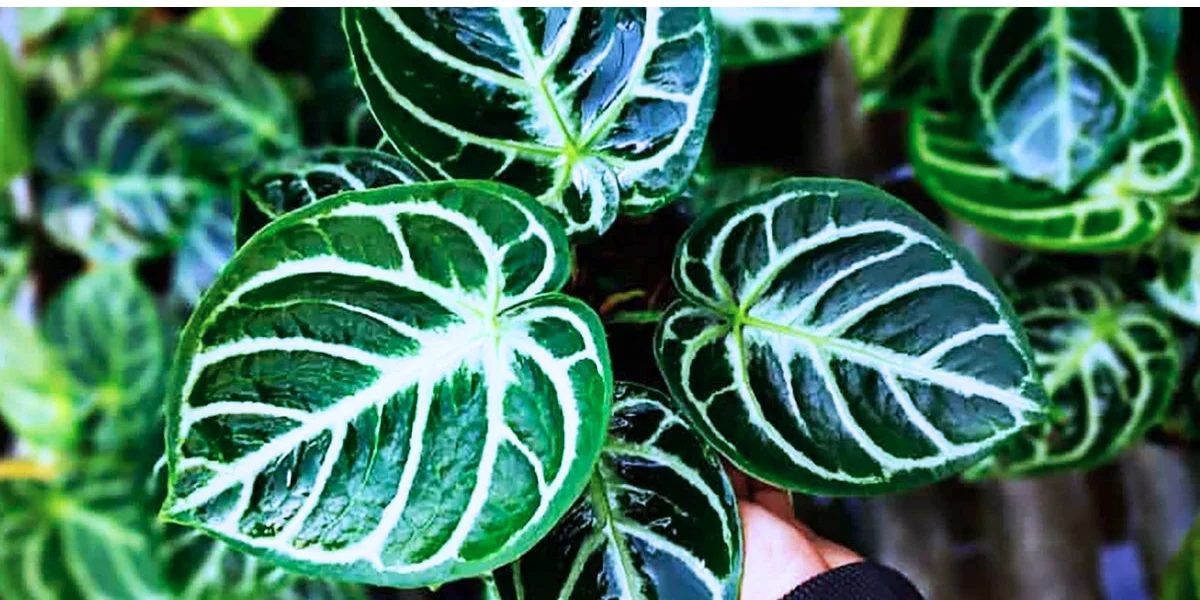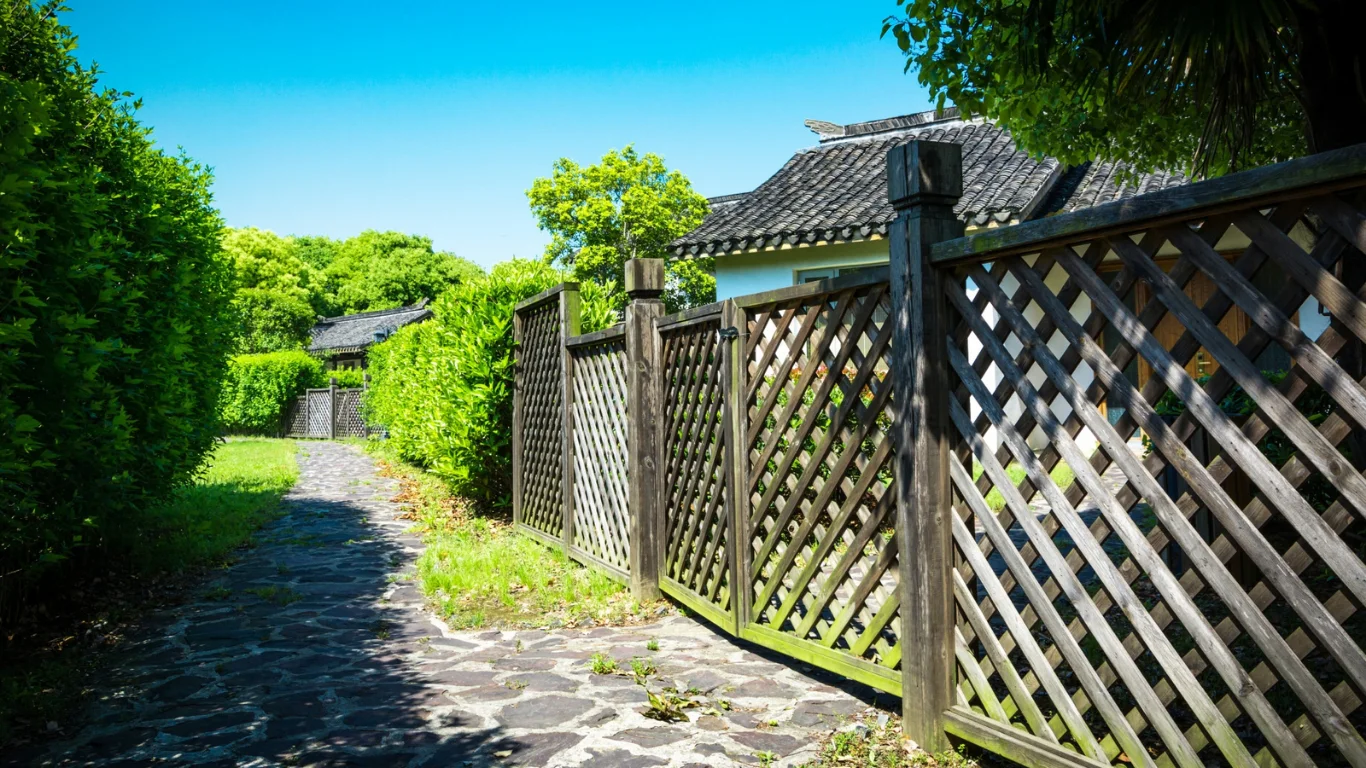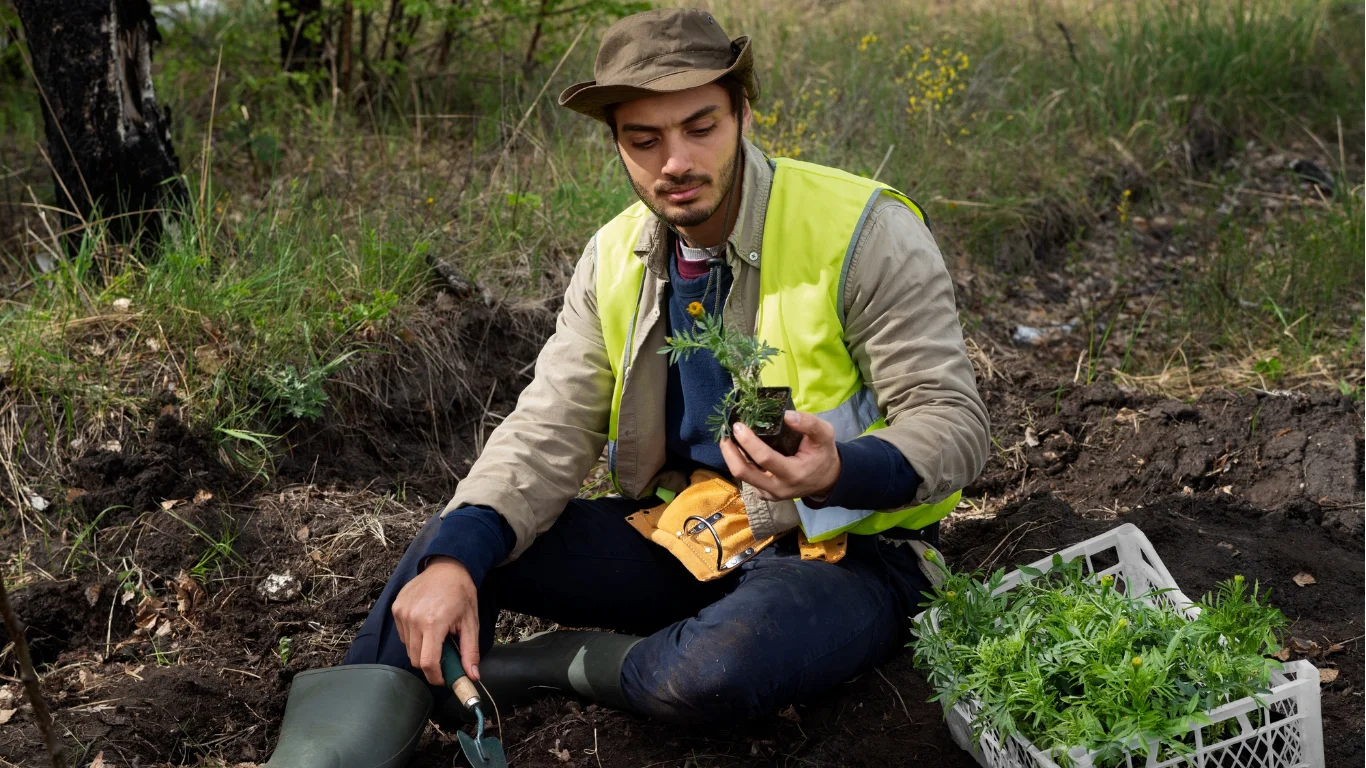As you know “Flamingo flower” popularly and known as Anthurium Dorayaki, its popularity is due to its charming, waxy red flowers and green foliage, due to which it is popular. It is a tropical Anthurium andraeanum variety that grows in and out of the rainforests of South America, which always makes it a natural fit for indoor environments with high humidity and filtered light.
It blooms several times a year, so a low-maintenance Anthurium Dorayaki usually grows best in a well-maintained home. All of our guidelines provide you with the best information for growing healthy Anthurium Dorayaki. Our guidelines provide you with an overall supply of best-selection tips for Anthurium Dorayaki care, propagation, and troubleshooting common problems.
Plant Overview
Did you know that Anthurium Dorayaki is repulsive for its heart-shaped, contrastingly glossy leaves and the bright red spathes surrounding the yellowish-white spadix? Its mysterious large glossy and bright leaves, a beautiful combination of bright flowers make it a luxurious exotic and a unique form that is perfect for home garden, office decoration and interior gardens.
It usually grows between 1-2 feet in height and climbs profusely which makes it an excellent ornamental plant. Anthurium Dorayaki is not only visually appealing but also plays an effective role in purifying the air. It usually grows between 1-2 feet in height and climbs profusely which makes it an excellent ornamental plant. This adds beauty to your space and is beneficial for both health.
Specifications
| Common Names: | Anthurium Dorayaki, Flamingo Flower |
| Botanical Name: | Anthurium andraeanum |
| Plant Family: | Araceae |
| Native Region: | South America |
| Plant Type: | Perennial evergreen |
| Height: | 1-2 feet (30-60 cm) |
| Blooming Season: | Year-round in optimal conditions |
| Ideal Placement: | Indoor spaces with bright, indirect light |
How to Care
To keep your Anthurium Dorayaki thriving, follow these detailed care guidelines.
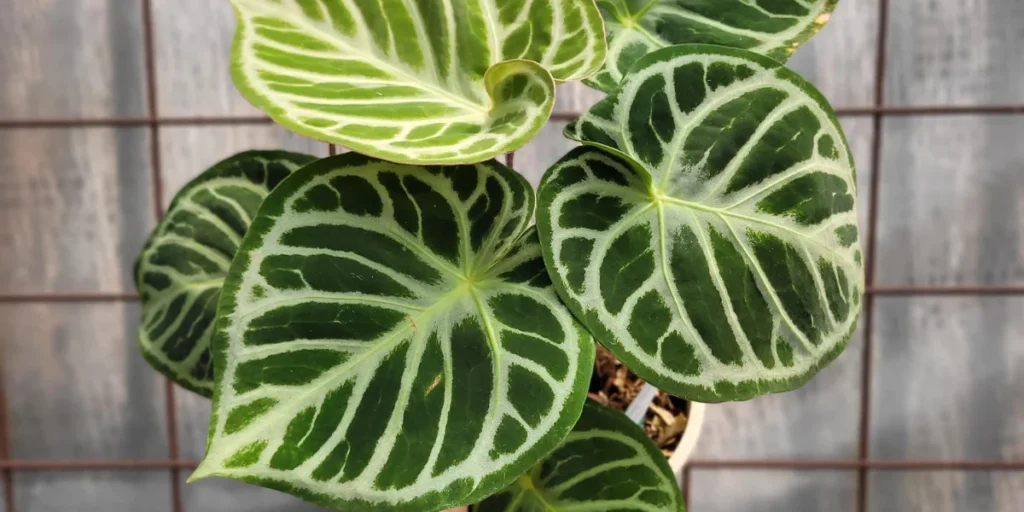
Temperature
Let us tell you that Anthurium Dorayaki is a tropical plant that requires the best of warm temperatures to grow with optimal growth. Aim for temperatures in the moderate range of about 18-27°C and 65°-80°F, which is necessary for optimum growth. Never place the plant near cold drafts, air conditioners or heating vents, but avoid them and provide temperature assurance as follows. Because the sudden change in temperature is very alarming for the plant which can stress the plant and affect or stop its growth. If the temperature is above 55° F, plant growth will be stunted and severe leaf damage may occur, so be careful.
Water
Like most other plants, Anthurium Dorayaki prefers moisture but is sensitive to overwatering which causes root rot and yellowing of leaves. Resume the watering schedule when you notice that the top 1-2 inches of soil has completely dried out. In the warmer months you should water it more often which is better for its growth and in winter reduce the supply of water to protect the soil from waterlogging. The container you place the plant in should have excellent drainage holes which are beneficial for the growth of the plant. After watering, it is best to drain excess water through the drainage holes.
Soil
Anthurium Dorayaki needs a well-drained potting mix, nutrient-rich soil mix, moisture must be used, pine bark and perlite mixture is very important as it provides maximum moisture and best drainage. Remains which is a useful process. The soil should be well-drained as well as well-drained but never soggy as this affects the roots. A soil pH of 5.5 to 6.5 is very important. Do not use and avoid compacted soil as it inhibits oxygen flow and can stunt and paralyze root growth. Take precautionary measures to avoid this as it has no problem preventing and harming the health and growth of plants.
Fertilizer
Anthurium Dorayaki needs a nutrient-rich fertilizer. It should be balanced with changing seasons to ensure a half-fertilizer supply every six to eight weeks during spring and summer. Often the growth of the plant slows down or stops in winter, so in this case do not add fertilizer at all. Applying too much fertilizer can damage the leaves, causing leaf burn and stunted growth. We will guide you through the steps to take to ensure the best possible journey from the root of the plant to grow.
Humidity
Let us tell you the essentials that Anthurium Dorayaki grows and thrives best in high humidity levels of around 60-80% humidity. If your place is dry, especially in winter, use a humidifier to maintain humidity and wash it regularly with a clean and dry method, or use a clean and dry tray to increase humidity, avoiding water or pebbles. Use which will increase humidity and improve plant growth.
Light
Anthurium Dorayaki values and prefers bright, indirect light for maximum blooming and optimal growth. Place it in a place where it can get filtered sunlight, for example you can place it on a north or east facing wall or around a door, but be careful not to expose it to direct sunlight as it Their leaves can be scorched due to which the color of the leaves of the plant may turn yellow or brown spots may appear on the leaves or generally the color of the leaves will disappear. The plant survives in low light conditions, but it produces fewer flowers in low light than in light.
Flowering
Anthurium Dorayaki blooms several times a year under the right conditions, and its flowers, which are usually colorful spathes around the spadix, last for several weeks. So you should use indirect light, excellent humidity and drainage and regular fertilization which will ensure a successful path to producing more flowers. And even if your plant is not giving flowers, it is because your feeding light, too much or too little water is decreasing, adjust it according to you and choose better so that your plant grows best. can induce maximum new flowers with production.
Pruning
Prune anthurium Dorayaki regularly to remove dead or yellow leaves, brown spotted leaves and flowers. This will not only be beneficial for new growth but also very beneficial for the health of the plant, allowing it to perform at its best. It is encouraged and one thing to remember is to use clean, clean and sharp scissors to cut them and cut from the base of the leaf stem so that the main stem is not damaged and the health should be maintained.
Potting and Repotting
Planting Anthurium Dorayaki after every two years helps in refreshing the soil and eliminates many common root problems which is beneficial and effective. When you repot the plant, choose a larger pot for it and use the best moist and fresh soil. Make sure that when the new vessel is filled with water, there must be drainage holes for it. The roots should be handled gently and the watering schedule should be continued by repotting the plant but the soil should never be completely wet.
Ideal Placement and Maintenance
Avoid exposing Anthurium Dorayaki to direct sunlight and keep it away from cold drafts and heating vents as well as keep it inside a well-lit room or near a window. Regularly wipe the leaves with a damp cloth to remove dust and sprinkle with light water so that they can breathe and absorb light optimally to speed up their growth.
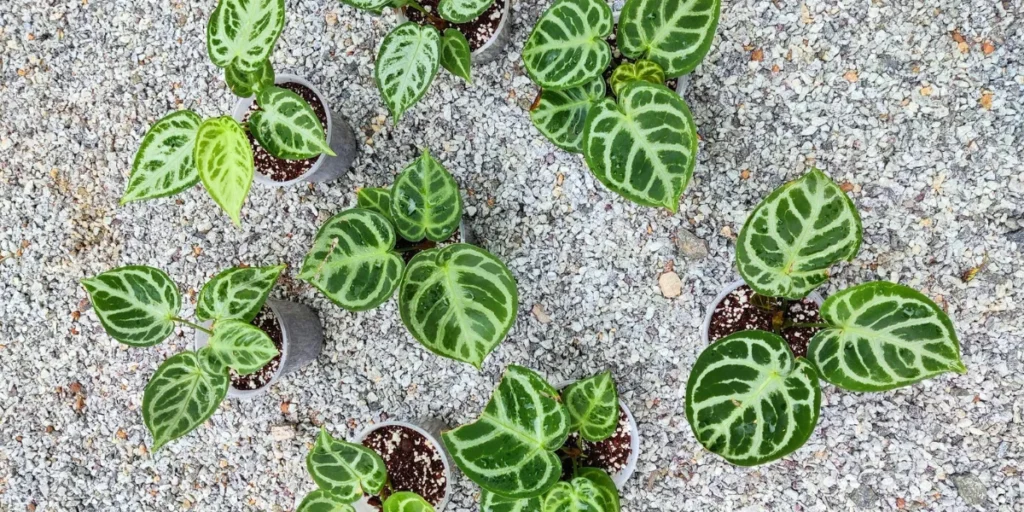
Propagation
Propagation can be continued by dividing Anthurium Dorayaki. Follow these steps and tips for successful preaching.
- Separate the Plant: Carefully remove the plant from the pot and gently separate the roots. You have to look for natural separations as opposed to where the stems and roots are divided.
- Plant the Divisions: Place each division in a separate pot with fresh soil.
- Water and Maintain: Moisture should always be maintained and the plant should be watered at regular intervals to encourage better root growth.
Did you know that propagation is best done in spring when the plant’s growth phase is most active.
People also read about Philodendron White Wizard
Common Pests and Diseases
Anthurium Dorayaki is susceptible to several pests and diseases, including:
Spider Mites:
These are small insects and these small insects always thrive in dry conditions and weather and can be very dangerous to the leaves, so you should increase the humidity, if there is no humidity, use a humidifier. And wash it regularly with clean water and also use insecticidal soap.
Aphids and Mealybugs:
These are two different types of insects with the same purpose. Together they suck the sap from the leaves of the plant and completely weaken the plant. Make sure to use neem oil or insecticidal soap to avoid this infection.
Root Rot:
Caused by overwatering, root rot manifests as yellow leaves and mushy roots. Prevent it by using well-draining soil and watering appropriately.
Leaf Spot Fungus:
High humidity and poor air circulation can lead to fungal infections. Remove infected leaves and improve air circulation around the plant.
Problems and Solutions
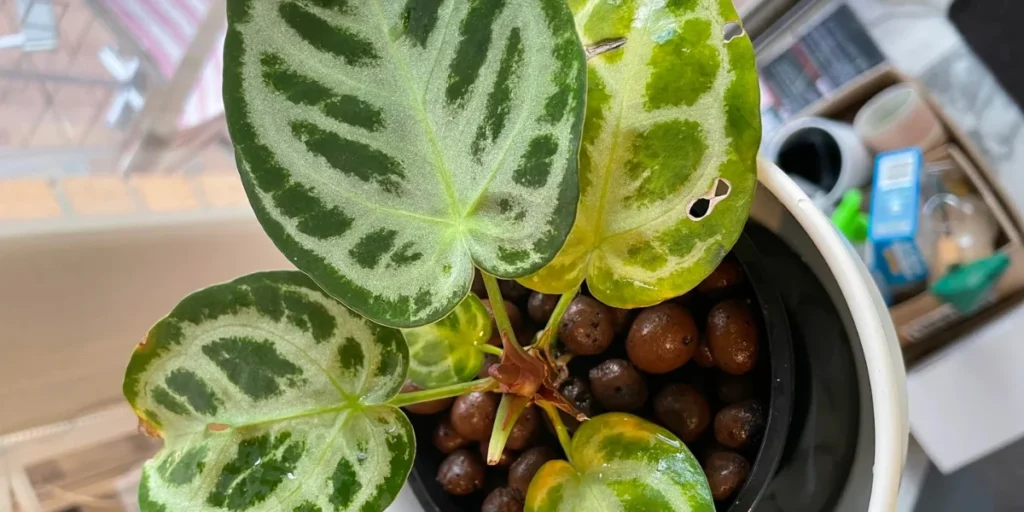
Yellow Leaves:
It is common for the leaves to turn yellow due to the fact that we often under-water or sometimes over-water the plants, so improve your watering routine and increase humidity to keep the plant at its best.
Brown Leaf Tips:
This is usually caused by lack of water or by overwatering the plant. Therefore, it is very important to ensure that the humidity is always maintained and that the plant is not over or under watered but an adequate and as per requirement should be ensured.
Lack of Blooms:
Even if Anthurium Dorayaki is not producing flowers, it needs more light or fertilizer.
Toxicity
Anthurium Dorayaki is highly toxic to domestic dogs, cats and humans due to the calcium oxalate crystals it contains, which can cause stomach irritation, stomach upset, mouth irritation and other ailments if eaten. If you have sensitive skin, the plant should be handled with gloves as it can cause damage and irritation to your skin, which may cause an allergic reaction. Therefore, it is important to take precautions to keep it out of the reach of pets and children.
Types
Anthurium Dorayaki Red: It is always recognized and distinguished for its striking red spathes and dark green leaves.
Anthurium Dorayaki Pink: It is distinguished by the fact that it is a rare type that is delicate with soft pink spathes.
Anthurium Dorayaki Variegated: Its leaves feature white or cream streaks that add an extra layer of visual interest that makes it recognizable and recognizable.
Conclusion
Anthurium Dorayaki is a charming, graceful and low-maintenance plant that brightens any interior space with its vibrant border colors and tropical appearance. It should be kept in the right conditions, with a steady supply of water, fertilizer, indirect light and a balanced watering schedule that will keep you enjoying and enjoying the wonderful plant for years to come. In an experimental study, plant owners Anthurium Dorayaki in any combination caused an increase in Anthurium Dorayaki.
FAQs
Water every 1-2 weeks, allowing the top inch of soil to dry between watering.
Bright, indirect light is ideal; avoid direct sunlight.
Only in warm, humid climates; otherwise, keep it indoors.
No, it is toxic if ingested by pets and humans.
Provide high humidity, indirect light, and regular feeding during spring and summer.
